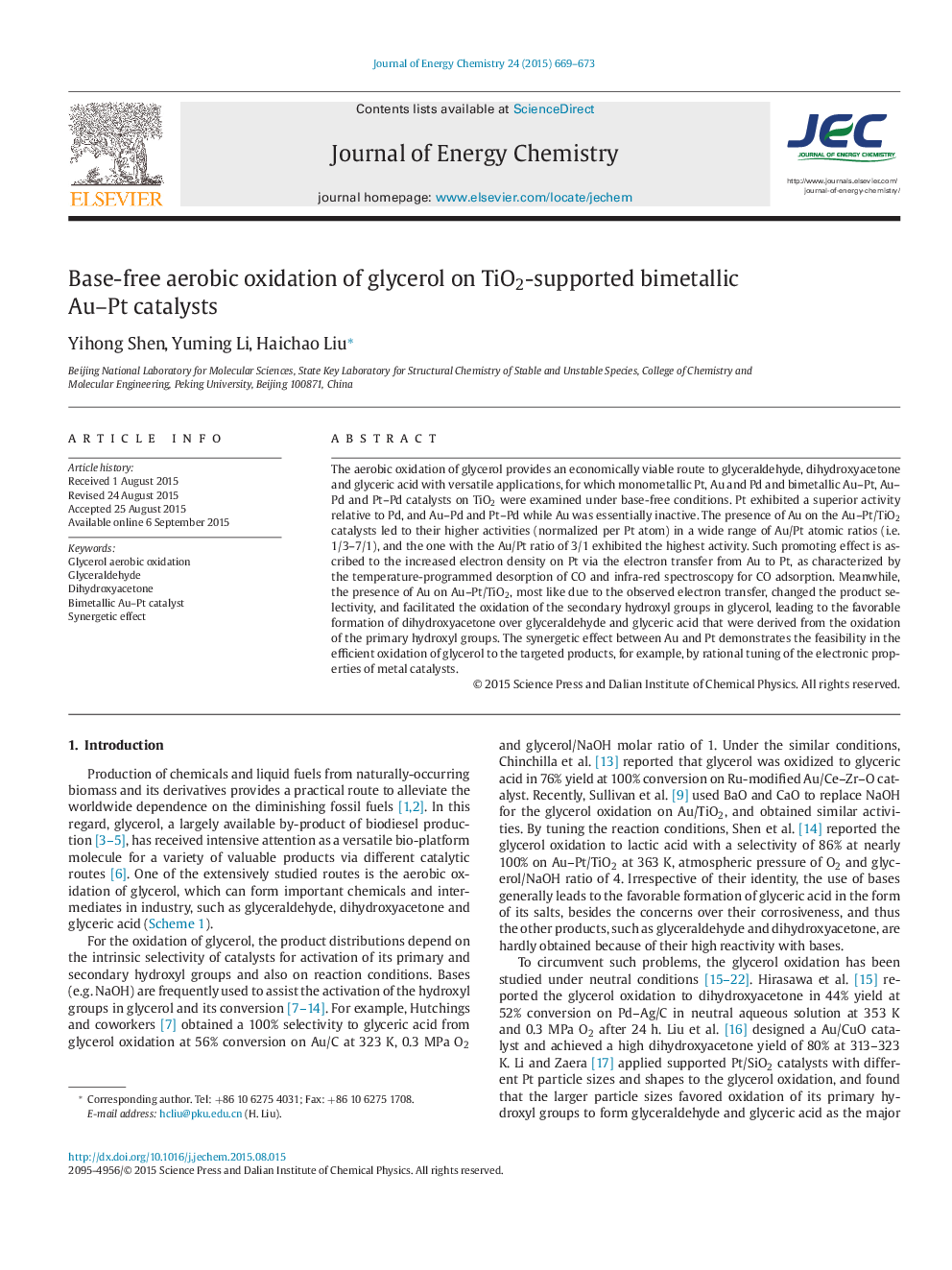| Article ID | Journal | Published Year | Pages | File Type |
|---|---|---|---|---|
| 63786 | Journal of Energy Chemistry | 2015 | 5 Pages |
The aerobic oxidation of glycerol provides an economically viable route to glyceraldehyde, dihydroxyacetone and glyceric acid with versatile applications, for which monometallic Pt, Au and Pd and bimetallic Au–Pt, Au–Pd and Pt–Pd catalysts on TiO2 were examined under base-free conditions. Pt exhibited a superior activity relative to Pd, and Au–Pd and Pt–Pd while Au was essentially inactive. The presence of Au on the Au–Pt/TiO2 catalysts led to their higher activities (normalized per Pt atom) in a wide range of Au/Pt atomic ratios (i.e. 1/3–7/1), and the one with the Au/Pt ratio of 3/1 exhibited the highest activity. Such promoting effect is ascribed to the increased electron density on Pt via the electron transfer from Au to Pt, as characterized by the temperature-programmed desorption of CO and infra-red spectroscopy for CO adsorption. Meanwhile, the presence of Au on Au–Pt/TiO2, most like due to the observed electron transfer, changed the product selectivity, and facilitated the oxidation of the secondary hydroxyl groups in glycerol, leading to the favorable formation of dihydroxyacetone over glyceraldehyde and glyceric acid that were derived from the oxidation of the primary hydroxyl groups. The synergetic effect between Au and Pt demonstrates the feasibility in the efficient oxidation of glycerol to the targeted products, for example, by rational tuning of the electronic properties of metal catalysts.
Graphical AbstractAerobic glycerol oxidation activity and selectivity to glyceraldehyde and dihydroxyacetone correlate with the electronic properties of Au–Pt/TiO2 catalysts tuned by their atomic ratios of Au/Pt. Figure optionsDownload full-size imageDownload as PowerPoint slide
